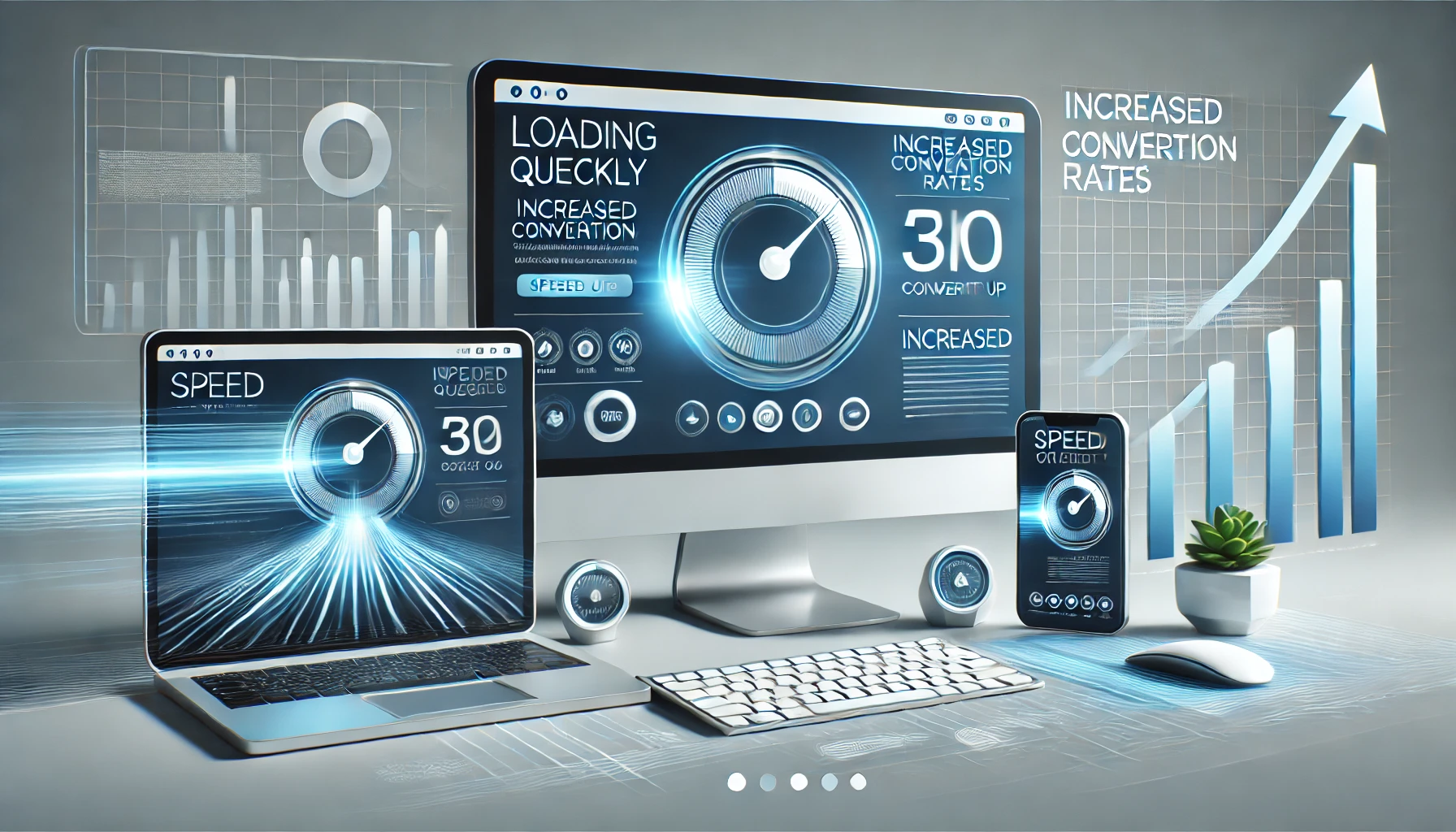
The Impact of Website Speed on Conversion Rates
In today’s fast-paced digital world, every second counts, especially in e-commerce. The speed of a website not only influences user experience but also significantly affects conversion rates, customer retention, and search engine rankings. Slow load times can cost businesses potential sales, while fast websites offer a smoother shopping experience, leading to better customer satisfaction and loyalty. This article explores how website speed impacts your business’s bottom line.
The Direct Link Between Speed and Conversion Rates
Website speed is directly tied to conversion rates, with several studies illustrating the dramatic effects of even minor delays. A 100-millisecond delay (or just one-tenth of a second) can cause a 7% drop in conversion rates. Meanwhile, Shopify reports that a one-second improvement in page load time can increase conversions for mobile users by 27% This is particularly important as mobile shopping now dominates e-commerce traffic.
Customers expect seamless experiences. If a page takes too long to load, they are far more likely to abandon the website. For every additional second your page takes to load, the bounce rate increases by 32%, according to OuterBox. Fast websites keep visitors engaged and reduce the chances of abandonment during critical moments like checkout.
Customer Retention and Loyalty: The Long-Term Impact
Speed doesn’t just impact immediate conversions; it also affects long-term customer loyalty. Shopify found that 79% of users are less likely to purchase again from a website they find too slow. Slow websites make a poor first impression, leading customers to question the site’s reliability and professionalism. This not only damages brand trust but also harms customer retention.
Repeat business is critical in e-commerce, and speed plays a huge role in whether customers return. If a store consistently provides a fast, smooth experience, customers are more likely to return. Optimizing your site’s speed can therefore lower customer acquisition costs by encouraging more repeat purchases.
Speed and Search Engine Optimization (SEO)
Website speed is also an essential factor in search engine optimization (SEO). Google has long considered site speed as a ranking factor, and in 2021, it introduced Core Web Vitals, which measure the user experience of a website, including loading time. Websites that load faster and provide a smooth experience rank higher in search results, increasing their visibility and attracting more organic traffic.
By optimizing your site’s speed, you not only improve user experience but also boost your search rankings. Higher search rankings lead to more traffic, which generally translates into more sales.
Real-World Examples: The Benefits of Speed Optimization
Several real-world cases highlight the impact of speed optimization on e-commerce success. Pinterest, for example, improved its mobile site speed by 60%, which resulted in a 40% increase in sign-up conversions. This was achieved through front-end optimizations and streamlining data fetching, which reduced user-perceived wait time.
Similarly, Vodafone optimized its website for Core Web Vitals, leading to an 8% increase in sales. Their efforts improved both search engine performance and user experience. These examples demonstrate the tangible benefits of investing in speed optimization.
Conclusion: The Long-Term Benefits of Speed Optimization
Website speed is more than just a technical detail; it’s a business necessity. Faster sites convert better, improve customer satisfaction, boost search rankings, and encourage long-term loyalty. Investing in speed optimization is one of the most effective ways to boost conversion rates and enhance the overall shopping experience. As the e-commerce landscape continues to evolve, prioritizing speed will help your business stay competitive and grow.